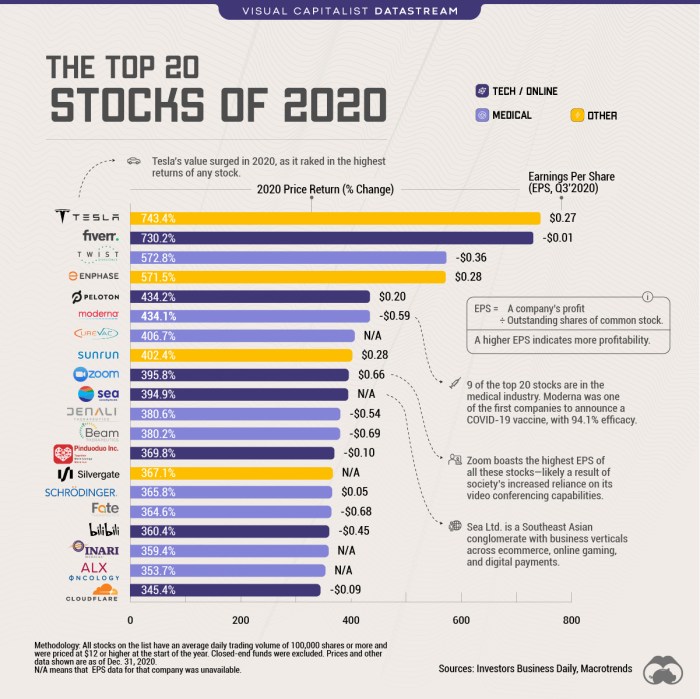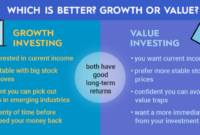Best Value Stocks to Buy Now – Value stocks have long been a favorite of investors looking for stable, long-term returns. In the current market, these undervalued companies present an even more compelling opportunity. With global economic uncertainty, rising interest rates, and inflation concerns impacting markets, value stocks have emerged as a safe haven for those seeking to minimize risk and maximize returns. This guide delves into the best value stocks to buy now, the factors to consider when identifying these stocks, and how to build a balanced investment portfolio by incorporating both value and growth stocks.
Table of Contents
ToggleWhy Invest in Value Stocks Now?
Value stocks are companies that are trading below their intrinsic value, often due to temporary market conditions or investor neglect. These stocks are characterized by strong fundamentals, including solid earnings growth potential, attractive dividend yields, and low price-to-earnings (P/E) ratios.
Unlike growth stocks, which tend to be more volatile and sensitive to market fluctuations, value stocks offer more stability and consistent returns over the long term.

In 2024, market conditions favor value investing. Global economic growth is slowing, and many investors are concerned about the effects of rising interest rates. These factors put pressure on growth stocks, which are more sensitive to changes in the economic environment. Value stocks, on the other hand, often perform well in a slower economy, making them an attractive option for investors looking for stability.
However, it’s important to note that value stocks don’t necessarily mean low growth. Many value companies possess strong fundamentals and are simply underappreciated by the market. By identifying these hidden gems, investors can position themselves for both stable returns and long-term appreciation.
Diversifying with Growth Stocks
While value stocks offer stability, balancing your portfolio with growth stocks can enhance your overall returns. Growth stocks, which represent companies expected to grow at an above-average rate, have the potential to deliver substantial returns, particularly over the long term. However, they tend to be more volatile and carry higher risk, especially during periods of economic uncertainty.
Incorporating both value and growth stocks into your investment strategy is crucial for diversification. This balanced approach allows investors to capitalize on market inefficiencies, minimize risk, and increase the potential for long-term success.
By having a mix of value stocks for stability and growth stocks for higher potential returns, you can better navigate different market conditions and achieve more consistent performance over time.
Key Factors to Consider When Identifying Value Stocks
Not all value stocks are created equal. To successfully identify the best value stocks to buy now, investors should focus on several key factors that indicate a company is trading below its intrinsic value but has the potential for future growth. These factors include:
- Earnings Growth Potential
- Value stocks should demonstrate the ability to grow their earnings over time. A company’s historical earnings growth rate, along with future earnings projections, can provide insight into its long-term growth potential. Companies with consistent earnings growth are better positioned to weather market volatility and offer long-term returns.
- Dividend Yield
- Many value stocks pay dividends, providing investors with a steady income stream. The dividend yield, which is calculated by dividing the annual dividend per share by the current stock price, is an important metric for value investors. Stocks with attractive dividend yields can offer both income and capital appreciation, making them an appealing choice for conservative investors.
- Price-to-Earnings (P/E) Ratio
- The P/E ratio is a measure of how expensive a stock is relative to its earnings. Value stocks typically have lower P/E ratios compared to their industry peers, indicating that they are trading at a discount to their intrinsic value. Investors should compare a company’s P/E ratio to the broader market and its competitors to determine whether it is undervalued.
- Debt-to-Equity Ratio
- A company’s debt-to-equity ratio measures how much debt it has relative to its equity. Value stocks often have lower debt-to-equity ratios, indicating that they are less risky than companies with high debt levels. A low ratio suggests that a company is financially stable and has the capacity to manage its debt obligations effectively, making it a safer investment during times of market uncertainty.
- Return on Equity (ROE)
- ROE is a measure of how efficiently a company is using its equity to generate profits. High ROE values are typically associated with companies that are well-managed and consistently profitable. Value stocks with strong ROE ratios are likely to be better positioned for long-term growth, even if they are currently trading at a discount.
Sectors and Industries to Target for Value Investing in 2024
Certain sectors and industries are currently trading at attractive valuations and may be poised for growth in the coming years. By focusing on these areas, investors can identify value stocks with significant upside potential. Some sectors to consider include:
- Financials
- Financial stocks have faced challenges in recent years due to concerns about rising interest rates and regulatory pressures. However, many financial companies are now trading at discounted valuations, offering a compelling opportunity for value investors. Banks, insurance companies, and asset management firms with strong balance sheets and healthy earnings growth are particularly attractive in the current market environment.
- Energy
- The energy sector has also been under pressure, largely due to the volatility in oil prices. However, with oil prices beginning to recover, energy stocks may be positioned for a rebound. Companies involved in oil exploration, production, and renewable energy development could offer significant upside for value investors willing to take a long-term view.
- Utilities
- Utility stocks are often considered defensive investments because they are less sensitive to economic fluctuations. These companies provide essential services, such as electricity and water, which tend to remain in demand regardless of the broader economic environment. Utility stocks often have low P/E ratios and high dividend yields, making them a solid choice for conservative value investors seeking steady returns.
- Healthcare
- The healthcare sector remains a key area for value investing, with many companies offering strong fundamentals and growth potential. Pharmaceutical companies, medical device manufacturers, and healthcare service providers are essential businesses that continue to thrive regardless of economic conditions. Investors can find value opportunities in healthcare stocks with strong balance sheets, robust pipelines, and consistent earnings growth.
Building a Balanced Portfolio: Value and Dividend Stocks
Incorporating dividend-paying stocks into your value investment strategy can provide an additional layer of stability and income. Dividend stocks offer regular payouts, which can be reinvested to compound growth over time.
By diversifying your portfolio with dividend stocks across various industries and sectors, you can reduce the impact of market fluctuations and generate a steady stream of income.
Dividend stocks are especially appealing during periods of market volatility because they provide consistent returns, even when stock prices fluctuate.
By balancing your portfolio with both value and dividend-paying stocks, you can aim for both capital appreciation and income generation, helping to reduce risk while enhancing long-term returns.
Conclusion: Unlocking the Potential of Value Stocks
Investing in value stocks requires careful research and a disciplined approach. By focusing on key financial metrics, such as earnings growth potential, dividend yield, P/E ratio, and ROE, investors can identify undervalued companies with strong fundamentals.
Additionally, targeting specific sectors, such as financials, energy, utilities, and healthcare, can provide opportunities for growth in the current market environment.
Balancing your investment portfolio with both value and growth stocks is essential for maximizing returns and minimizing risk. While value stocks offer stability and steady returns, growth stocks can deliver substantial gains over the long term.
By diversifying your investments and considering dividend-paying stocks, you can create a well-rounded portfolio that performs well in various market conditions.
Frequently Asked Questions
What are the key characteristics of value stocks? Value stocks typically have strong earnings growth potential, attractive dividend yields, favorable P/E ratios, low debt-to-equity ratios, and high ROE. These characteristics indicate that the stock is trading at a discount to its intrinsic value but has the potential for long-term appreciation.
How can I identify undervalued sectors for value stock investing? Look for sectors that have been underperforming but have strong fundamentals and growth potential. Factors such as industry trends, economic conditions, and technological advancements can provide valuable insights into which sectors may offer value opportunities.
What are the potential risks of investing in value stocks? Value stocks can be more volatile than growth stocks during bull markets and may underperform the broader market. Additionally, some companies may be undervalued for a reason, such as poor management or declining industry trends. Diversifying your portfolio and conducting thorough research can help mitigate these risks.




